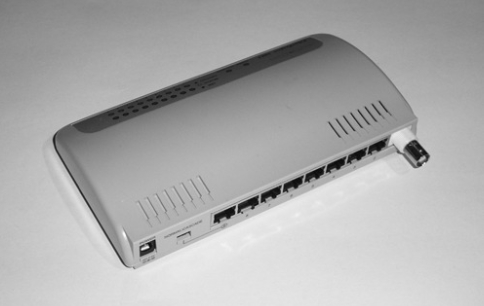Match the following:
PCI =
An ______ IDS will monitor activity, log any suspicious activity, and...
A ______ intrusion detection system does not take any corrective...
VESA =
ISA =
_____ refers to the space between the ceiling tiles and the floor...
AUI = ____________ ________ ________
DIX = _____ _____ _____
A _______ is the combination of a bridge and a router, and it makes...
Cables are typically connected from the wall jack to the patch panel...
IDF =
A ________ is a network connectivity device that is used to break the...
A __________ hub is a hub that has uplink capabilities.
When a switch assigns the VLAN identification information to a packet,...
An ________ _________ ________ is a security device that monitors...
PSTN =
CSU/DSU =
A _______-based IDS monitors network traffic for suspicious behavior.
ISDN=
At which layer of the OSI model does the Router reside?
This device is also known as a concentrator.
MDF =
A _______ is responsible for translating information from one format...
What type of hub is this?
____-based intrusion detection systems monitor the local system for...
AGP =
MCA =
A wireless access point (WAP) is also known as a _____.
EISA =
One disadvantage of using a hub is that it leads to a lot of unneeded...
It is a best practice to use switches whenever possible because of the...
Hubs are used in Ethernet environments, whereas Token Ring...
PCMCIA =
MAU = ________ _________ ________
MAUs don't have collision indicators because you can't have...
A thinnet segment cannot be attached directly to the BNC connector on...
1 - What does a network interface card add to a computer's...
19. Which of the following layers does a gateway run at (select the...
8. Which network component is used to extend the distance the...
Virtual LANs (VLANs) are a feature of special switches, known as...
15. Which networking feature allows you to group ports on a switch to...
MAUs don't use an uplink port?
Which layer does a Bridge run at?
16. Which layer of the OSI model does a router run at?
This layer switch doesn't associate the port with the VLAN, but the...
12. Which type of network component enables each device to have...
There are two popular types of ISDN connections: Which one is a...
2 - In order for a NIC to interact with the computer, what needs to be...
24. How many B-channels are in a BRI ISDN connection?
17. Which networking device routes data used by a routable protocol...
4. When troubleshooting to find out why a network card will not...
13. When data is sent to a system on a switch, the data is sent...
3 If a card has the capability to connect to more than one kind of...
14. Which layer of the OSI model does a bridge run at?
At which OSI layer does the hub run at?
Which OSI layer does a Switch run at?
24. How many B-channels are in a BRI ISDN connection?
7. Which of the following types of hubs does not regenerate the signal...
11. When data is sent to a system on a hub, the data is sent to...
There are two popular types of ISDN connections: Which one is a...
6. What is an AUI connector?
This enterprise-capable switch feature is a feature that allows the...
10. Which network device is used to connect systems together in...
This enterprise-capable switch feature runs at layer 2 and is designed...
This layer switch implements what is known as port switching. Port...
An old bus architecture that runs at 8 MHz and supports 8- or 16-bit...
Is the new graphics standard that runs at 66 MHz and is used by video...
The MAU allows for a physical star topology but is logically a bus...
9. Which type of hub enables more than one type of cable or...
At which OSI layer does the repeater run at?
This enterprise-capable switch feature is a feature on Cisco switches...
22. Which of the following devices is used to connect to digital phone...
This is the bus architecture used in laptop computers. It has a 16-bit...
This enterprise-capable switch feature is called "Tagging".
Is the upgrade to ISA that supports 32-bit cards running at 8 MHz.
This layer switch bases membership to a VLAN on the subnet ID of this...
Is the popular bus architecture today for adding cards to the system....
20. Which type of device is responsible for connecting dissimilar...
Was built by IBM and has a 32-bit architecture that runs at 10 MHz.
At the time ran at the system speed (which was around 33 MHz); it has...
This enterprise-capable switch feature allows the administrator to...
This enterprise-capable switch feature is designed for optimizing data...
Match 'em
















